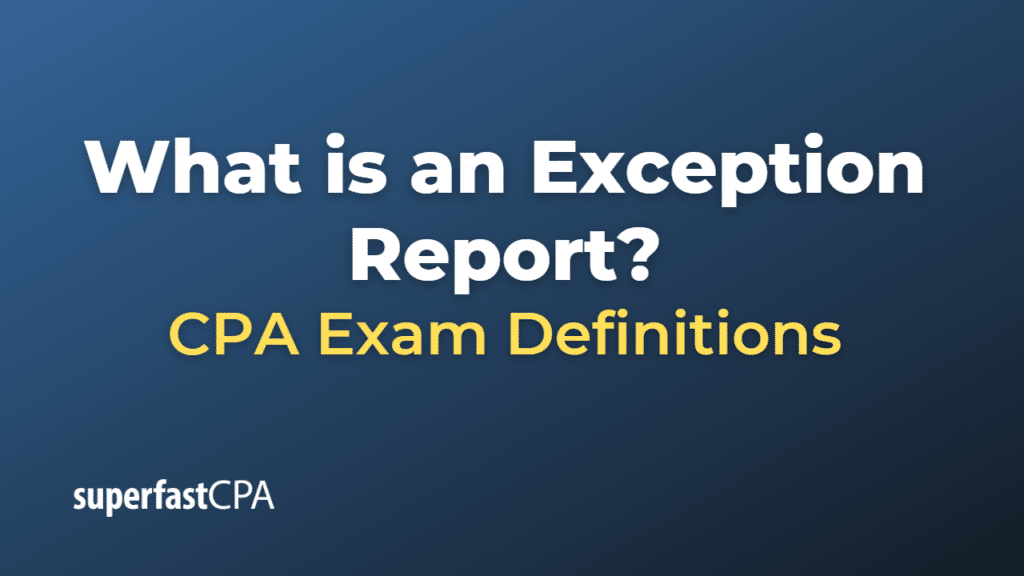Exception Report
An exception report is a type of report used in management control systems that highlights only those items, events, or activities that deviate significantly from the standard, norm, or budgeted results. In other words, it “excludes” everything that is running as expected and only “includes” or reports items that are exceptions or anomalies.
For example, in a business context, if a company sets a standard for its financial performance, any significant deviation from this standard would be highlighted in an exception report. This could include things like unexpected expenses, sales revenues that are significantly above or below projections, or unusually high levels of employee absenteeism.
The purpose of an exception report is to draw management’s attention to areas of the business where performance is not as expected, either better or worse, so that they can take appropriate action. By focusing on exceptions, managers can efficiently use their time to address areas of the business that most need their attention, rather than reviewing all operations or activities, most of which may be running as expected.
It’s worth noting that what counts as an “exception” can vary widely depending on the specific standards or thresholds set by a company or manager. For some businesses, a 10% deviation from expected results might be significant, while for others, a 2% deviation might be cause for concern. The key is to set thresholds that are meaningful and useful for the particular business and situation.
Example of an Exception Report
Let’s consider a retail company that operates several stores. This company might use exception reports to manage its operations more effectively. For instance, it might generate monthly sales exception reports to identify stores that had sales results significantly different from their projections. Here’s an example of how an exception report might be used:
At the end of each month, the company runs a sales exception report that compares the actual sales for each store with the sales projections for that month. The company has set a threshold of 10%, meaning any store whose sales are more than 10% above or below the projections will be included in the exception report.
In May 2023, Store A’s projected sales were $100,000, but its actual sales were $112,000 – a 12% increase. Store B’s projected sales were $150,000, but its actual sales were $130,000 – a more than 13% decrease. All other stores were within the 10% threshold.
So, the May 2023 sales exception report will include Store A and Store B because their sales deviated from the projections by more than 10%. The report will provide detailed information about these deviations and may also include possible explanations or recommendations for action.
This exception report allows the company’s management to quickly identify and focus on the stores that had significantly different sales results from what was expected. They can then investigate further to understand why these deviations occurred and what actions, if any, should be taken. For example, they might discover that Store A’s sales increased due to a local event that drove more traffic to the store, while Store B’s sales dropped due to a local competitor’s promotion. Based on these findings, they might decide to host events at other stores or develop strategies to compete more effectively with local competitors.













